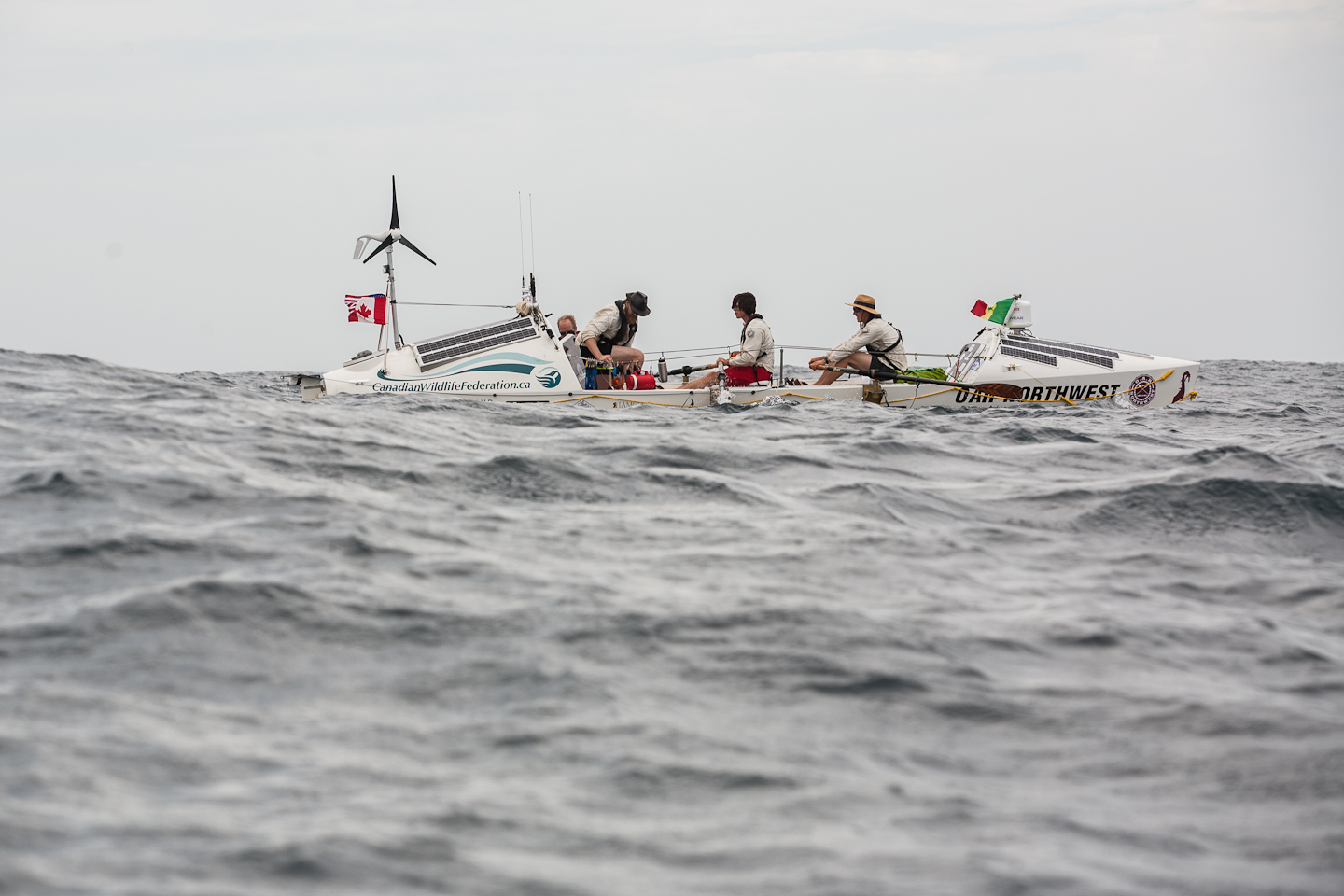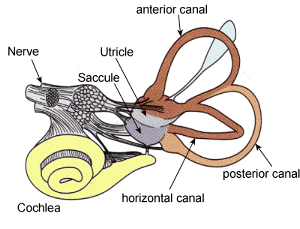Daily Update 4.1
Week 7: Module 4: Date 3/12/13
Module 4 is titled The Body. In this topic we will explore the human body in relation to the experience the crew of the JRH is having. At this point the crew has been at sea for over 40 days. That is a long time to be on a small boat rowing 12 hours a day with three other people. This module will delve into these experiences.
If you recall the first week of the expedition was filled with queasy stomachs and retching over the side of the JRH. It seems fitting that in the first update about the body we look at motion sickness. Motion sickness is something that most of us are familiar with, either personally or as an observer. In fact some statistics state that as many as 2/ 3rds of the population are prone to motion sickness under severe circumstances e.g. rowing a 29ft boat across the ocean.

Motion sickness has traditionally been thought to be related to balance and spatial orientation. The brain receives input from your inner ear, which is in control of balance and informs the brain about the direction of movement.

The eyes tell us where the body is in space, and the skin joints and spine combine to inform us (our brain) which parts of our body are touching the ground and which parts are moving. When the brain receives conflicting information, e.g. the ears tell us we are moving but the body tells us we are stationary, it may result in motion sickness. 
Some recent studies into this sickness have revealed the potential for another cause. The theory put forth by Thomas Soffregen, a professor at the University of Minnesota, attributes motion sickness to motion. That is, the motion of the person.
According to his theory of motion sickness, published several years ago, we all “wobble,” so to speak, at a particular frequency. Whether sitting or standing, we are never perfectly still. There is a natural postural sway of the head, and different people naturally sway more or less. Just like water waves in a high school physics experiment, the frequency of natural sway interacts with the frequency of environmental moving systems [cars, boats, planes, etc.]. Just like in the wave tank, those waves can cancel each other out, accentuate each other or pass right through each other without effect, depending on the frequency of the postural sway and of the external phenomenon.*
This theory could answer why kids experience higher rates of motion sickness, due to the fact that they are usually moving around a bit more than adults. It could also explain why sleeping helps as well, along with some of the medicine that causes drowsiness. If you are drowsy you are moving less.
Thankfully, the crew of the JRH has acclimated to the motion and haven’t had any symptoms since the first rough week.
Sources:
*http://www.uc.edu/info-services/motion.htm
http://www.wisegeek.com/what-causes-motion-sickness.htm
http://www.aip.org/dbis/HFES/stories/17051.html
http://www.medicalnewstoday.com/articles/176198.php
